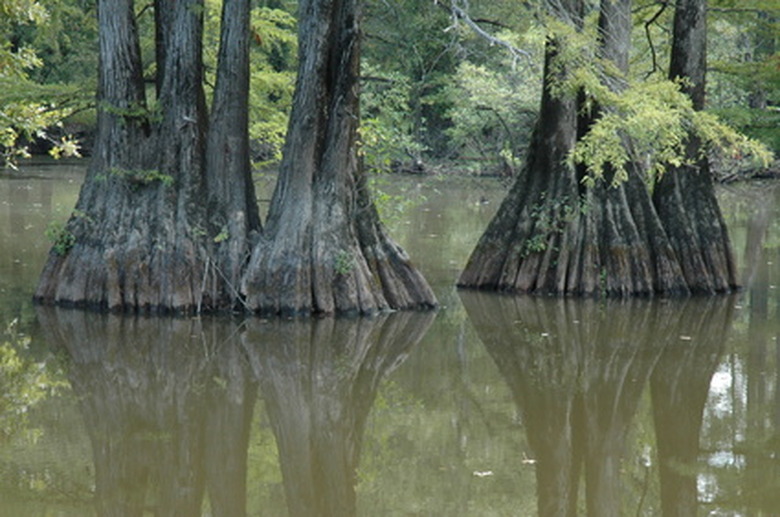Which Are The Most Water-Hungry Plants?
Although all plants need water to live, some plants need more than others. Some plants thrive in standing water, while other plants cannot tolerate wet feet. In those plants, wet feet causes root rot and low oxygen levels in the soil. However, the plants that thrive in these conditions come in many different forms.
Water-Tolerant Trees
The willow (Salix) tree is one of the most well-known water-hungry trees. These trees are often found growing in floodplains, along streams and anywhere there is moist soil. This large tree grows up to 100 feet tall. The bald cypress (Taxodium distichum) grows next to waterways and in swamps and can live up to 600 years. This tree is known for its odd trunk shapes, and is often used to make art and furniture.
- Although all plants need water to live, some plants need more than others.
- Some plants thrive in standing water, while other plants cannot tolerate wet feet.
Water-Tolerant Grasses
River oats (Chasmanthium latifolium), also known as spangle grass, grow in wetlands and stream banks. The flowers of this grass are striking because they grow in clusters of V-shaped pairs that dangle. In contrast, Indiangrass (Sorghastrum nutans) grows on the prairies in moderate to wet sandy soil. This grass is planted along roads to control erosion.
Water-Tolerant Perennials
Climbing aster (Aster carolinianus) grows in swamps and riverbanks. The flowers are light purple and plentiful. Swamp sunflower (Helianthus angustifolius) grows in very moist soils, especially clay. This plant grows to 6 feet tall and has many bright yellow flowers. Although this sunflower prefers full sun, it will grow in part sun.
- River oats (Chasmanthium latifolium), also known as spangle grass, grow in wetlands and stream banks.
- Although this sunflower prefers full sun, it will grow in part sun.
